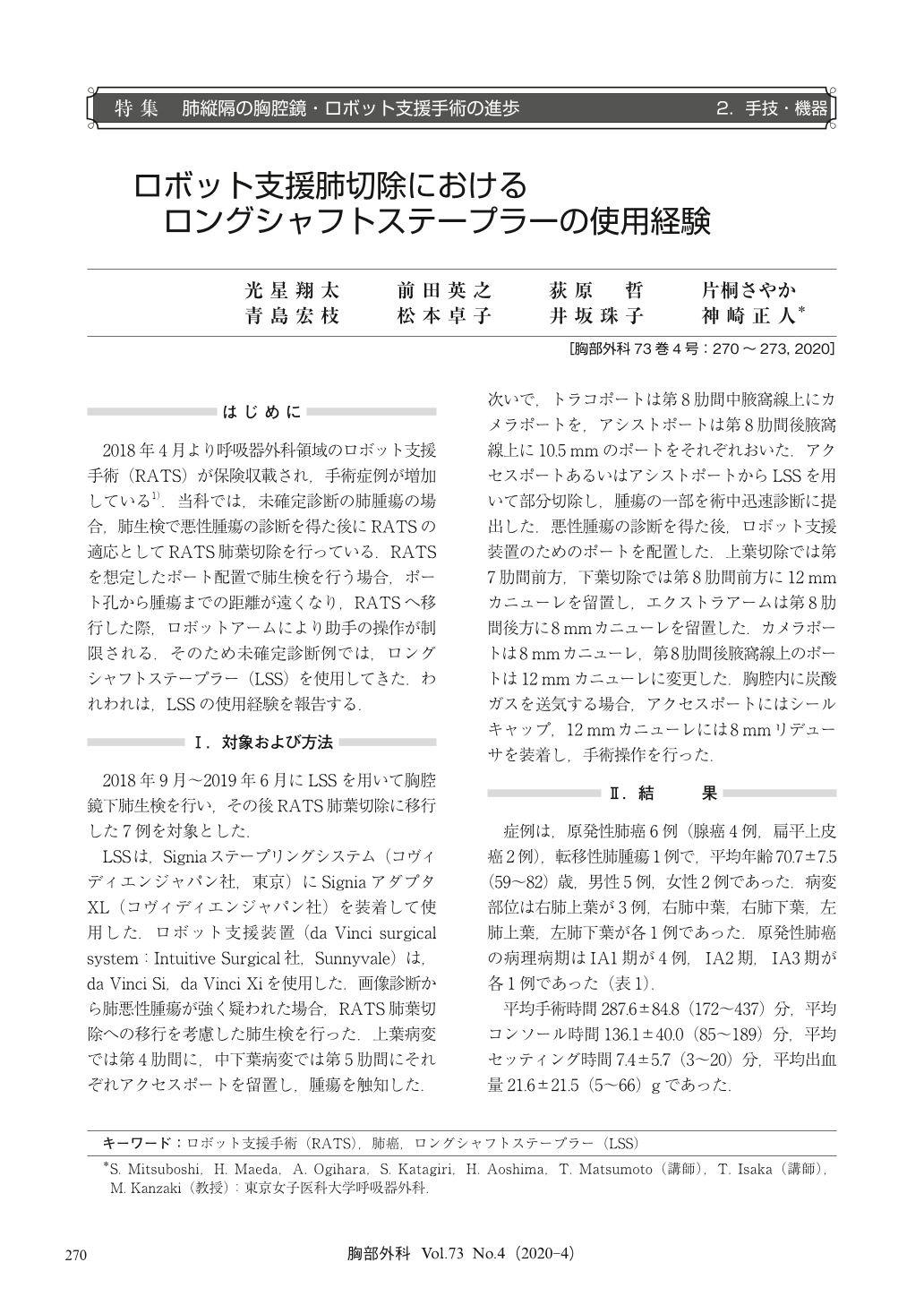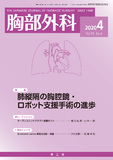Japanese
English
- 有料閲覧
- Abstract 文献概要
- 1ページ目 Look Inside
- 参考文献 Reference
2018年4月より呼吸器外科領域のロボット支援手術(RATS)が保険収載され,手術症例が増加している1).当科では,未確定診断の肺腫瘍の場合,肺生検で悪性腫瘍の診断を得た後にRATSの適応としてRATS肺葉切除を行っている.RATSを想定したポート配置で肺生検を行う場合,ポート孔から腫瘍までの距離が遠くなり,RATSへ移行した際,ロボットアームにより助手の操作が制限される.そのため未確定診断例では,ロングシャフトステープラー(LSS)を使用してきた.われわれは,LSSの使用経験を報告する.
Since national health insurance began to cover robot-assisted thoracoscopic surgery (RATS) for malignant lung tumors, malignant mediastinal tumors, and benign mediastinal tumors in Japan starting in 2018, the number of RATS performed domestically has increased rapidly. In the case of undiagnosed lung tumor, it is necessary to perform a thoracoscopic lung biopsy in the port arrangement for RATS lung resection in the case of undiagnosed lung tumor. The 2 ports are placed in the same 8th intercostal space and a 3 cm utility thoracotomy is added to the 4th or 5th intercostal space for the thoracoscopic lung biopsy. Because the assistant uses the stapler from the port, the distance to the target area increases. When it is converted to RATS for malignant lung diseases, the utility thoracotomy is often hidden by the robot arm and all ports placed in the 8th intercostal space are far from the target area. Furthermore, the assistant working space outside the patient’s body is limited by the robot arms. The Signia stapling system has an adapter to extend the shaft. By attaching the adapter, the shaft can be extended by 10 cm. This permits easy handling of the stapler during both thoracoscopic biopsy and RATS lung resection.

© Nankodo Co., Ltd., 2020


